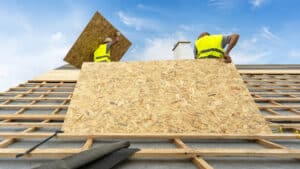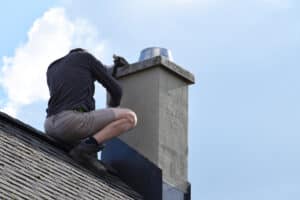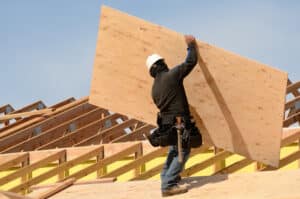
A leaky roof can trigger mold growth in just a couple of days. When rainwater enters your home and stagnates for more than 24-48 hours, mold spores will begin to germinate on the moist surface. As long as water (or moisture) and food (organic matter such as carpet, wood, flooring, etc.) are present, mold will grow in your home and trigger a myriad of structural damage and health issues.
How Roof Leaks Cause Mold Growth
Taking care of roof leaks and damage is vital for your home, health, and wallet. Systemic mold growth occurs when a roof leak causes moisture buildup allowing mold infestation throughout the attic area. Under these situations, mold remediation can be difficult, and you will need professional assistance to restore your property’s condition.
However, limited growth occurs when the attic has the right ventilation to minimize condensation. A simple roof leak repair should be able to remediate the little mold growth.
Either way, you should address issues to do with roof leaks without delay since all forms of mold pose serious health risks to everyone living in your home. Besides, mold spores can spread through your house via the HVAC system and trigger severe respiratory problems, allergies, and other health issues.
How to Prevent Mold Growth
The easiest way to prevent mold growth is to repair the leak promptly. Always hire a licensed roofing contractor to fix leaks and waterproof your home. During the roof repair, your roofer will carry out a thorough inspection of your roof and determine if professional mold remediation is necessary based on the severity of the growth.
An experienced technician will inspect your entire property for mold, get rid of the spores, deodorize your home, and clean up and restore all affected areas. Keep an eye on the wet areas to make sure all the mold has been removed.
How Long it Takes Mold to Grow
According to data from the Environmental Protection Agency and Centers for Disease Control and Prevention, mold can begin to form in just about 24 to 48 hours after moisture accumulation. Mold spores are typically ubiquitous, and it won’t take long for them to locate the water and settle.
Ultimately, the best way to prevent moisture damage to your home and avoid the hassle and trouble associated with mold is to address any roof leaks as soon as they show up. Always schedule periodic roof inspections at least twice every year and following major storms to help identify leaks early before they trigger costly mold infestation. Contact Adam Vaillancourt Roofing for all your roofing needs in the Southern New Hampshire and Northern Massachusetts area.




